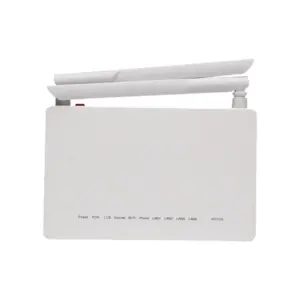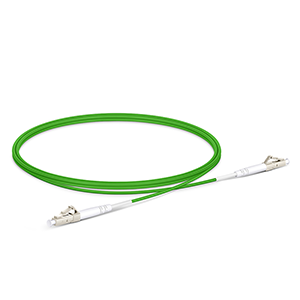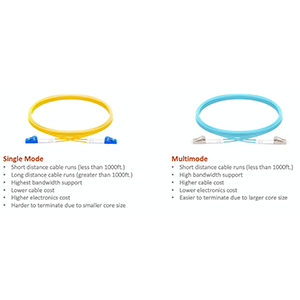I am happy to introduce you to 100BASE-FX and 100BASE-TX, which are standard interfaces for Ethernet communication. In this article I will introduce to you the definition and basic working principles of 100BASE-FX and 100BASE-TX, which use optical fiber and Twisted pair wire serves as the transmission medium.
We will compare their transmission distance characteristics and bandwidth transmission rates, and explore their advantages in different application scenarios. We hope this article can provide you with a comprehensive understanding of 100BASE-FX and 100BASE-TX, and help you in network construction and upgrades. make informed decisions.
Introduction to 100BASE-FX and 100BASE-TX
100BASE-FX and 100BASE-TX are two common Ethernet communication interfaces used to transmit data and connect network devices such as computers, network equipment, and switches. They are all Ethernet interfaces defined in the IEEE 802.3 standard.
Definition and rationale:
- 100BASE-FX: 100BASE-FX is an Ethernet interface that uses optical fiber as the transmission medium. The “100” indicates a transmission rate of 100 Mbps, “BASE” indicates baseband transmission, and “FX” indicates optical fiber transmission. It uses optical fiber as the transmission medium and transmits data through pulses of light. Fiber optic interfaces typically use SC or ST connectors.
- 100BASE-TX: 100BASE-TX is an Ethernet interface that uses twisted pair as the transmission medium. The “100” indicates a transmission rate of 100 Mbps, “BASE” indicates baseband transmission, and “TX” indicates twisted pair transmission. It uses twisted pairs as the transmission medium and utilizes electrical signals to transmit data. Twisted pair interfaces usually use RJ-45 connectors.
Transmission medium:
- 100BASE-FX: 100BASE-FX uses optical fiber as the transmission medium. Optical fiber has high bandwidth and anti-interference ability, and can transmit data over long distances and at high speeds. The transmission distance of optical fiber can reach several hundred meters to several kilometers, which makes 100BASE-FX suitable for scenarios requiring long-distance transmission, such as campus networks and metropolitan area networks.
- 100BASE-TX: 100BASE-TX uses twisted pair as the transmission medium. Twisted pair wiring usually uses copper conductors, which has the advantages of lower cost and ease of installation. The transmission distance of twisted pair is short, generally 100 meters, and is suitable for small-scale communication needs such as local area networks and home networks. Twisted pairs are divided into different categories (such as Cat5, Cat5e, Cat6, etc.), and different categories of twisted pairs support different transmission rates and bandwidths.
Features and advantages of 100BASE-FX and 100BASE-TX
Transmission distance:
- 100BASE-FX: 100BASE-FX uses optical fiber as the transmission medium and has a long transmission distance. Typically, multimode fiber can transmit distances of several hundred meters, while single-mode fiber can transmit distances of several kilometers. The transmission distance of optical fiber is relatively stable and not susceptible to electromagnetic interference, so it is suitable for environments that require long-distance transmission.
- 100BASE-TX: 100BASE-TX uses twisted pairs as the transmission medium, and the transmission distance is short. Depending on the type of twisted pair, the transmission distance is generally 100 meters. The shorter transmission distance of twisted pair cable is due to the influence of signal attenuation and interference inside the twisted pair cable.
Bandwidth and speed:
- 100BASE-FX: 100BASE-FX supports high-bandwidth transmission with a transmission rate of 100 Mbps. Fiber optic transmission has high bandwidth capabilities and can meet the transmission needs of large amounts of data. 100BASE-FX is suitable for application scenarios that require large bandwidth, such as video transmission, data center interconnection, and high-speed data transmission.
- 100BASE-TX: 100BASE-TX also supports a transmission rate of 100 Mbps, but is limited by the characteristics of twisted pair and its bandwidth is relatively low. The bandwidth capabilities of twisted pair cables are affected by factors such as distance, wire quality, and electromagnetic interference. 100BASE-TX is usually used for shorter distance LANs and home networks, and is suitable for data transmission needs for general office and home use.
Performance advantages:
- 100BASE-FX: 100BASE-FX uses optical fiber transmission, has high anti-interference ability and stability, and can work in environments with strong electromagnetic interference. Fiber optics also have lower signal attenuation and less loss, resulting in better signal quality and transmission reliability. In addition, fiber optics can provide greater security because it does not leak signals, making them difficult to steal or interfere with.
- 100BASE-TX: 100BASE-TX uses twisted pair transmission, which has the advantages of lower cost and easy installation. Twisted pair cable is widely used in various network environments and is widely supported and standardized. In short-distance communication needs and general office environments, 100BASE-TX provides sufficient bandwidth and performance.
How 100BASE-FX and 100BASE-TX work
Encoding and modulation:
- 100BASE-FX: In 100BASE-FX, data is converted and transmitted through 4B/5B encoding. 4B/5B encoding is a line encoding method that converts every 4 input bits into 5 output bits. The purpose of this encoding method is to increase the reliability of transmission and reduce electromagnetic interference in transmission. At the sending end, the original data will be converted into a 5-bit code after 4B/5B encoding, and then transmitted through optical fiber. At the receiving end, the received 5-bit code is decoded back to the original 4-bit data.
- 100BASE-TX: In 100BASE-TX, data is converted and transmitted through Manchester encoding. Manchester coding is a clock-based coding method that divides each input bit into two clock cycles and changes the signal level in each cycle. Specifically, for each input bit, a “0” is encoded as a high level followed by a low level, while a “1” is encoded as a low level followed by a high level. The advantage of this encoding method is that it can extract clock information and reduce clock offset and data loss during transmission. At the transmitting end, the raw data is converted into clock-related level changes after Manchester encoding, and then transmitted through the twisted pair. At the receiving end, the received level changes are decoded back to the original data bits.
Interfaces and connectors:
- 100BASE-FX: 100BASE-FX usually uses optical fiber as the transmission medium and uses optical fiber interfaces for connection. Common fiber optic interface types include SC (Subscriber Connector) and ST (Straight Tip) connectors. These connectors are pluggable, making it easy to install and replace fiber optic connections.
- 100BASE-TX: 100BASE-TX uses twisted pair wire as the transmission medium and uses RJ-45 (Registered Jack-45) connectors for connection. The RJ-45 connector is a common network connector used to connect twisted pairs and network devices. The RJ-45 connector has 8 pins and supports an 8P8C (8 positions, 8 sockets) interface configuration for transmitting data and power.
Application scenarios of 100BASE-FX and 100BASE-TX
LAN:
- 100BASE-FX: The application scenarios of 100BASE-FX in LAN are mainly when longer transmission distance and higher bandwidth are required. For example, in a large office, school or enterprise network, if you need to connect network devices on multiple floors or over long distances, using 100BASE-FX can take advantage of fiber optic transmission to achieve reliable high-speed data transmission. In addition, 100BASE-FX has strong resistance to electromagnetic interference and is suitable for places with poor electromagnetic environment.
- 100BASE-TX: 100BASE-TX has a wide range of application scenarios in LAN, especially suitable for small offices, home networks or general enterprise networks. 100BASE-TX uses twisted pair wire as the transmission medium, which is low cost and easy to install. It can meet the data transfer needs of general office and home use, including file sharing, Internet access, email and printing, etc.
data center:
- 100BASE-FX: In data centers, 100BASE-FX is mainly used to connect different network devices, such as servers, storage devices, and network switches. Data centers often require high-density, high-bandwidth and low-latency data transmission, and 100BASE-FX provides long transmission distance and high-bandwidth capabilities to meet these needs. In addition, optical fiber transmission can also provide better signal quality and anti-interference, which is very important for the stability and reliability of high-speed data transmission.
- 100BASE-TX: In data centers, 100BASE-TX is typically used to connect devices over shorter distances, such as interconnects between servers or connections to network switches. Although the transmission distance of 100BASE-TX is relatively short, connection needs can often be met through short-distance cabling in data centers. Servers and switches in data centers typically use high-speed back-end connections (such as 10 Gigabit Ethernet or higher), while 100BASE-TX is mainly used for shorter-distance front-end connections to provide a more flexible network layout.
Deployment and configuration considerations for 100BASE-FX and 100BASE-TX
Network device compatibility:
- Switches and routers: When deploying 100BASE-FX and 100BASE-TX, you need to ensure that the switches and routers used support the corresponding interface type and transmission rate. Most modern commercial switches and routers offer support for both interfaces, but check the device specifications and compatibility lists to confirm.
- Network cards and terminal devices: To use 100BASE-FX or 100BASE-TX, terminal devices (such as computers, servers or network printers) need to have corresponding network cards or interfaces. Make sure that the end device’s network card or interface supports the required interface type and transmission rate.
Network topology and cabling:
- Distance limitation: 100BASE-FX and 100BASE-TX both have transmission distance limitations. Generally speaking, the transmission distance of 100BASE-FX can reach several hundred meters, while the transmission distance of 100BASE-TX is generally limited to about 100 meters. When deploying the network, you need to select the appropriate interface type based on the actual distance and ensure that the network cabling does not exceed its transmission distance limit.
- Repeaters and switches: If you need to exceed the transmission distance limit of 100BASE-FX or 100BASE-TX, you can use repeaters or fiber optic converters to extend the transmission distance. Repeaters can amplify and forward signals, and fiber optic converters can convert twisted pair signals into fiber optic signals to achieve long-distance transmission. In addition, the switch configuration also needs to consider network topology requirements, such as redundant links, VLAN division and traffic management.
Alternatives to 100BASE-FX and 100BASE-TX
With the growth of network demands and the development of technology, some emerging Ethernet interface technologies have emerged, which can replace 100BASE-FX and 100BASE-TX and provide higher transmission rates and performance. Here are some possible alternatives:
-
10GBASE-T: 10GBASE-T is an Ethernet interface technology that supports 10 Gigabit Ethernet (10GbE) rates. Compared with 100BASE-TX, 10GBASE-T provides higher transmission rate and bandwidth, reaching 10 Gbps. It uses existing copper cables (such as Cat 6a or Cat 7) for transmission, so it can leverage existing network cabling infrastructure. 10GBASE-T is suitable for scenarios that require higher bandwidth and faster data transmission rates, such as data centers, high-density office environments and large enterprise networks.
-
25GBASE-SR: 25GBASE-SR is a fiber-optic interface technology that supports 25 Gigabit Ethernet (25GbE) rates. It uses multimode fiber for transmission and provides transmission rates of up to 25 Gbps. Compared with 100BASE-FX, 25GBASE-SR provides higher speed and bandwidth and is suitable for data centers and enterprise networks that require high density, high bandwidth and fast data transmission. 25GBASE-SR can also provide longer transmission distance and lower signal attenuation by using the advantages of optical fiber.
These alternatives can meet growing network demands, providing higher transfer rates and greater bandwidth to support large-scale data transfers, cloud computing, virtualization and high-density applications. However, deploying these alternatives requires consideration of equipment compatibility, cost factors, and network infrastructure upgrades. When selecting alternatives, evaluate specific application needs and budget constraints, and ensure that network equipment and cabling can support the chosen option.
Summarize:
100BASE-FX and 100BASE-TX, as standard interfaces for Ethernet communication, provide efficient data transmission solutions for scenarios such as local area networks and data centers. As technology continues to evolve, we can expect higher transmission rates, lower power consumption and the emergence of emerging Ethernet standards. In future network construction, emerging Ethernet interface technologies, such as 10GBASE-T and 25GBASE-SR, may become attractive alternatives.
Whether you are looking for a solution in an office, school or enterprise network, choosing 100BASE-FX or 100BASE-TX is a smart decision, they will provide you with reliable data transmission and high-speed Internet connections. I hope this article can help you better understand 100BASE-FX and 100BASE-TX, and provide valuable guidance for your network construction and upgrade.
- What is the difference between 100BASE-FX and tx?
- What does 100BASE-FX and 100BASE-TX Ethernet mean?
- What are the two prime differences between 100BASE-FX and 100BASE-TX?
- What is the meaning of TX and FX?
- Is 100BASE-FX single mode or multimode?
- What is 100BASE-FX Ethernet used for?
- What is 100Base-FX?
- Is 100Base-FX LED or laser?
- Is 100Base-FX single mode?




